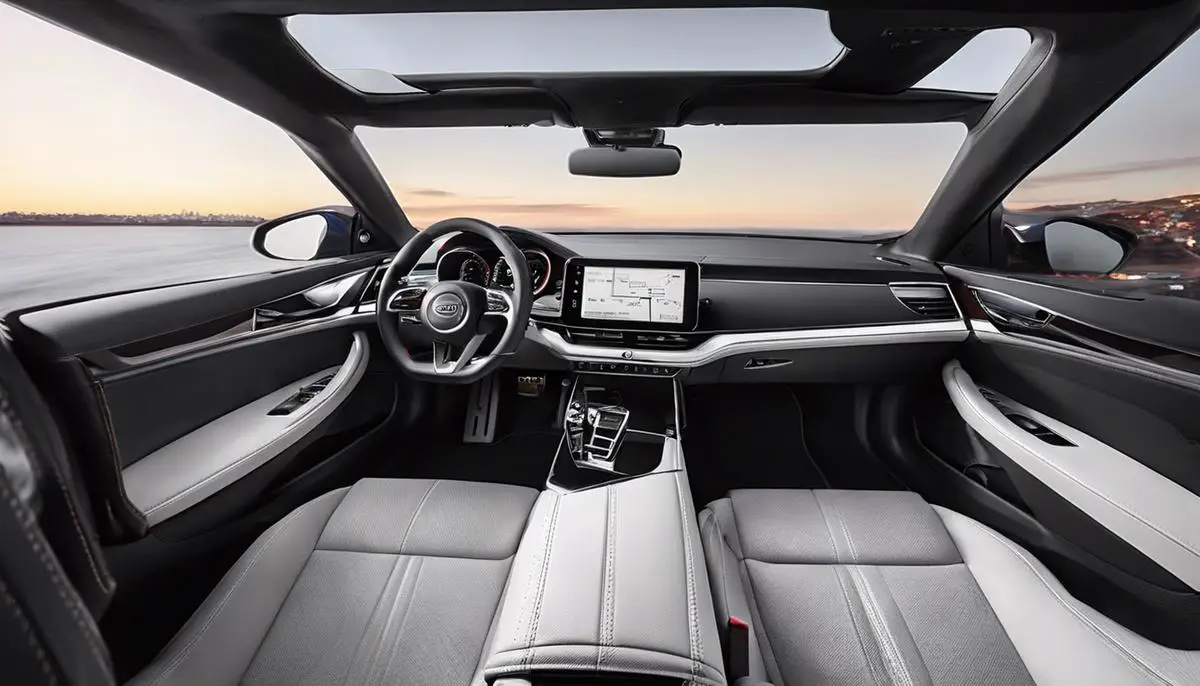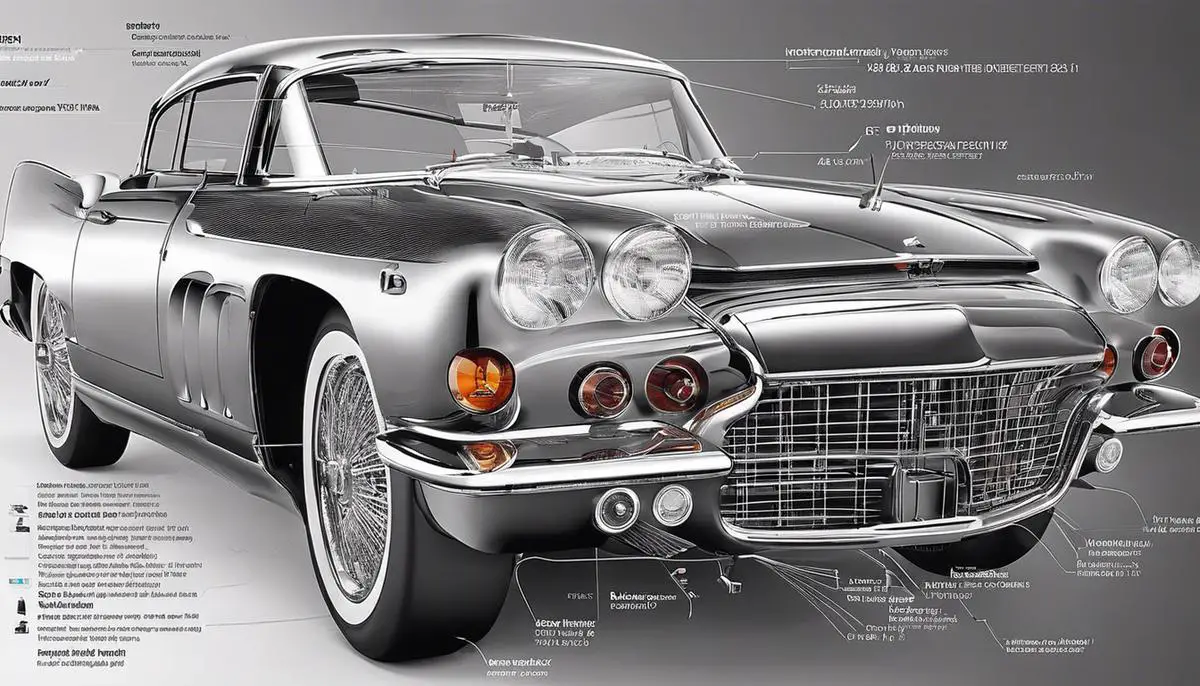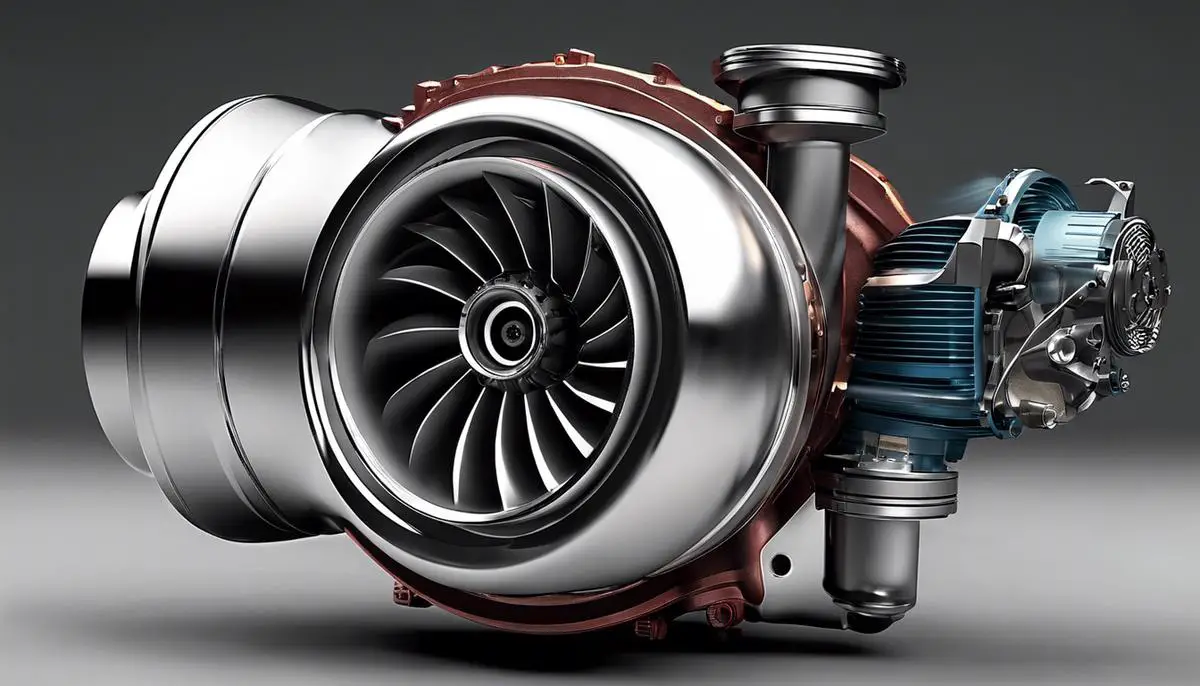When it comes to choosing a new car, many of us focus on the exterior design, engine performance, and fuel efficiency. However, the car’s interior space can make a significant difference in the overall comfort and usability of the vehicle for passengers and cargo alike. In this discussion, we will delve into the vital interior dimensions of a car, like headroom, legroom, hip room, and shoulder room. These measurements aren’t just numbers; they define the spatial experience inside a vehicle. By learning how to accurately gauge these spaces using appropriate measuring tools such as tape measures, laser distance meters, and angle finders, you’ll be equipped to make a well-informed decision on your next car purchase based on its true interior capacity.
Contents
Understanding Car Interior Dimensions
Unveiling the Secrets to a Comfortable Ride: Key Dimensions to Measure in Your Car’s Interior
Are you tired of cramped legroom and seats that just don’t seem to have enough space? Want to know exactly what makes a car’s interior comfortable before taking the plunge on your next vehicle? Fear not, fellow auto enthusiasts! Understanding the key dimensions of a car’s interior can elevate your purchasing game to the next level, ensuring every journey is a joy, not a squeeze. So, let’s dive into the essential measurements that factor into the comfort, functionality, and overall spaciousness of your dream ride.
Headroom – The Vertical Comfort Zone
When you slide into your driver’s seat, the last thing you need is a headliner cramping your style. Measuring headroom is straightforward – it’s the vertical space from your seat’s base to the ceiling above. Don’t forget to check this both in the front and back seats. Adequate headroom can mean the difference between feeling hemmed in and having a cabin that breathes openness.
Legroom – Stretch Out in Style
Long drives shouldn’t mean a battle for knee space. Legroom is a critical comfort dimension for both driver and passengers. You’ll want to measure the distance from the front edge of the seat to the pedals for the driver and from the front seat’s back to the back row seats for the passengers. Adequate legroom lets everyone stretch out, reducing fatigue and making for a more relaxed journey.
Shoulder Room – Personal Space Not to Skimp On
Nobody likes rubbing elbows, quite literally, with their fellow passengers. Shoulder room measures the horizontal space across the seat, giving a good indication of how three-across seating will fare without the passengers feeling squished. Measure from door to door at the level of the shoulders to gauge spaciousness in this dimension. It’s the unspoken ally in the fight against the dreaded “middle seat” discomfort.
Hip Room – Contours that Count
The contour of a car seat can mean the difference between comfort and consternation. Hip room acknowledges the width at the seat cushion level, critical for those longer road trips. By measuring the space between the front driver and passenger seats, and, similarly, the distance between passengers in the rear, you ensure that the car’s interior can accommodate us folks with varying hip widths with ease.
Cargo Space – The Practicality Measure
Whether it’s for shopping bags, camping gear, or a weekend getaway, cargo space can’t be ignored. Pop open the trunk or hatch and get a feel for the depth, width, and height available. Be mindful of wheel wells and other intrusions that can eat into the usable area. For a truly flexible space, also check how the rear seats fold; flat-folding seats expand cargo opportunities to cater to every hobby or need.
In conclusion, remember that a car isn’t just about its shiny exterior or what’s under the hood. The true test of a car is the experience it provides inside. So grab that tape measure and let’s make sure every car you consider is a tailored fit, not just a means to get from A to B!

Using the Right Measuring Tools
Essential Tools for Precision Interior Measurements in Your Ride
When diving into the nitty-gritty of car interior measurements, it’s not just about knowing your headroom from your hip room; it’s about how exactly you go about capturing those dimensions with precision. Whether you’re a burgeoning automotive aficionado or looking to customize your vehicle’s interior, having the right tools at your disposal is crucial. Let’s roll up our sleeves and get into the specifics of what you’ll need in your toolkit.
Tool #1: Steel Tape Measure
While it might seem obvious, never underestimate the power of a reliable steel tape measure. This tool is the cornerstone of accuracy when determining the distances within your car’s interior. For areas such as shoulder room, where you’re measuring the space from one inside door panel to the other, a tape measure that’s at least 100 inches will ensure you cover the stretch without selling yourself short.
Tool #2: Digital Caliper
For enthusiasts looking to delve into more detail, a digital caliper can impart an uncanny level of precision. This instrument is particularly handy for measuring smaller spaces or areas where a tape measure may falter in providing exact numbers. Think about gauging the minute distances on your console or around the gear shift.
Tool #3: Angle Finder
Car interiors are more than just a collection of straight lines; they’re an array of complex curves and angles. An angle finder, especially a digital one, can help determine the pitch of your dashboard or the angle of the rear seats. With this information, you can ensure that any modifications or additions harmonize with your vehicle’s original ergonomics.
Tool #4: Laser Distance Measurer
When precision is paramount, enter the laser distance measurer. This gadget can be a game-changer for capturing measurements of the cargo area from the comfort of the driver’s seat. It saves time and increases accuracy by using lasers to record distances instantly. Plus, in larger vehicles, it overcomes the awkwardness of stretching tape measures across vast spaces.
Tool #5: Flexible Curve Ruler
In customizing or simply understanding your vehicle’s interior, you’ll come across irregular surfaces that stubbornly defy straight edges. A flexible curve ruler is perfect for tracing contours and shapes, transferring the exact curvature and length onto paper or another medium to better visualize changes or enhancements.
Remember, while these tools are invaluable for accuracy, it’s equally important to keep a steady hand and an eye for detail when employing them. Take multiple measurements to ensure consistency and always double-check figures before making any permanent changes. With these gadgets at your disposal, you’ll be measuring like a pro, getting the exact specifications that you need to bring your automotive vision to life. Whether it’s custom storage solutions or simply a desire to understand your car’s spatial dynamics better, these instruments are your steadfast companions on the journey to a perfectly-tailored car interior.

Calculating Total Interior Volume
Calculating the total interior volume of a car involves a systematic approach and the right set of tools. While previous discussions might have dived into the essence of specific aspects such as headroom and cargo space, piecing it all together for a comprehensive volume requires a few more steps and considerations.
Passenger Volume:
To begin with, segment the car interior into manageable sections – think of it as drawing invisible boundaries around the areas where passengers would sit. This includes front and rear seating zones. Use a laser distance measurer for long straight lines and an angle finder to ensure that you’re capturing the full breadth of the space at the correct angle, which can be especially important when dealing with sloped surfaces such as the windshield or the rear glass. Take measurements between the points where the head, shoulders, hips, and legs would occupy the space.
For each section, record the length, width, and average height – calculated from multiple points to account for variations. For instance, measure the height from the seat to the roof at several points above where a passenger’s head might be. Combine these dimensions to calculate the volume of each section using the formula for volume (length x width x height), making sure to convert all measurements to the same units, typically cubic feet.
Compartments and Pockets:
In-car storage is more than just cargo space; it includes glove compartments, center consoles, door bins, and other nooks. These areas may seem minor, but they contribute to the total volume. Employ a digital caliper for smaller, tight spots to capture precise dimensions. This tool can meticulously gauge the width and depth of narrow spaces. Calculate the volume of each compartment by applying the same formula used for passenger volume.
Combining Total Volume:
To determine the actual interior volume, add the volumes of all the individual sections together. Understanding that the shape of every car is unique, some ingenuity is necessary when contoured surfaces are in play. A flexible curve ruler can be invaluable here, allowing for the tracing of irregular shapes like seat contours and door panels.
Considerations for Accuracy:
Accuracy is paramount in this endeavor, so double-check measurements and always use the most appropriate tool for the task at hand. Be aware of irregular and curved surfaces that can present challenges – straight-line tools may not suffice for precise measurement of these areas.
Now, equipped with the calculated volumes of passenger space and the added intricacy of compartments and pockets, one can stitch together a complete picture of a car’s internal landscape. This figure can be useful for several purposes, from comparing the roominess of different cars to determining if a vehicle meets specific needs based on interior space.

Acquiring a clear understanding of the nuances of car interior measurements is essential for anyone in the market for a new vehicle. By mastering the techniques of measuring and calculating interior space, prospective buyers are better prepared to select a car that promises comfort and practicality. Armed with precise measurements of passenger and cargo volume, the decision-making process transcends subjective comfort perceptions and enters the realm of objective assessment – ensuring that your choice accommodates your needs as snugly as your intended vehicle’s seats will, hopefully, envelop you on your various journeys.



